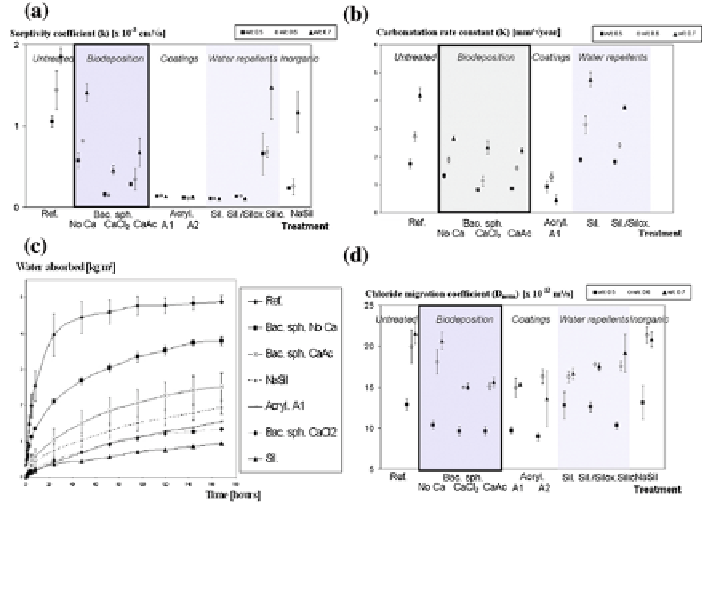Environmental Engineering Reference
In-Depth Information
Fig. 15.2 Effect on different grades of mortar applied with different types of surface treatments.
(De Muynck et al.
2008b
; Siddique and Kaur Chahal
2011
). a Sorptivity coefficients, k. b The rate
of water absorption versus time for w/c 0.6. c Carbonation rate constants, K. d Chloride migration
coefficients, D
nssm
protect concrete from degradation proves to be the advantageous property. Bio-
deposition appears to be a promising technique. The effect tests of the ureolytic
bacteria (Sporosarcina pasteurii) on the compressive strength, water absorption,
and rapid chloride permeability of concrete made with silica fume were performed
at the age of 28 and 91 days. Test results indicated that inclusion of S. pasteurii in
concrete enhanced the compressive strength, reduced the porosity and permeability
of the concrete. Maximum increase of 38.2 and 44 MPa in compressive strength at
28 and 91 days was observed. Moreover, reduction in water absorption was
observed with 105 cells/ml of bacteria. This improvement in compressive strength
was possibly due to deposition on the bacteria cell surfaces within the pores.
Scanning electron microscopy revealed the direct involvement of S. pasteurii in
calcium carbonate precipitation which was further confirmed by XRD. Due to
calcite deposition in concrete, it was observed that reduction in chloride perme-
ability of concrete occurred (Chahal et al.
2012
). Grabiec et al. (
2012
) explored
surface modification of recycled aggregate concrete using biodeposition involving
a method employing Sporosarcina pasteurii (Bacillus pasteurii) bacteria. It was
possible to obtain reduction in water absorption of aggregate; the effect was more
visible in case of finer fractions and for aggregates originating from inferior quality
concrete. Calcium chloride was used for precipitation of calcium carbonate, while

Search WWH ::

Custom Search